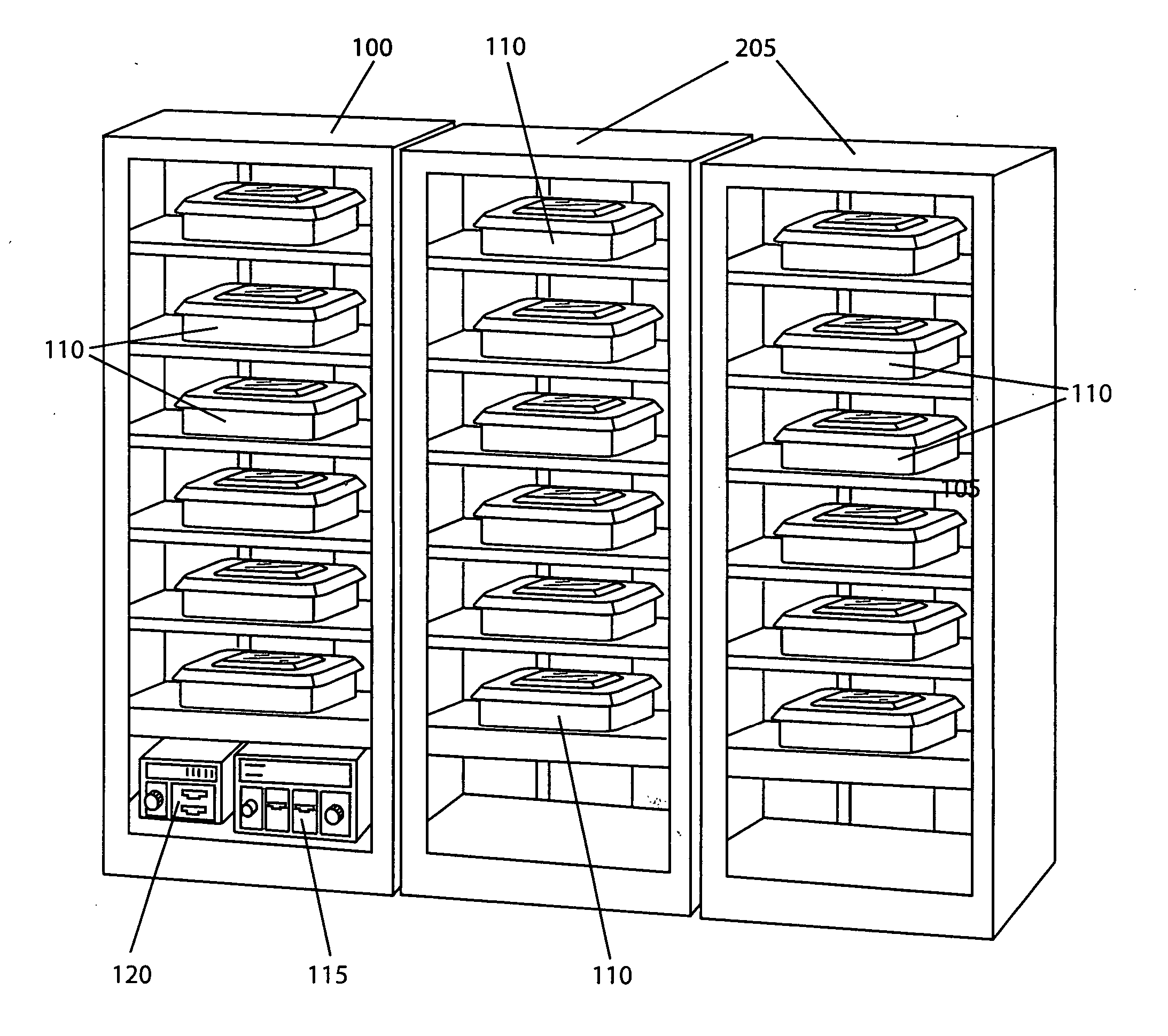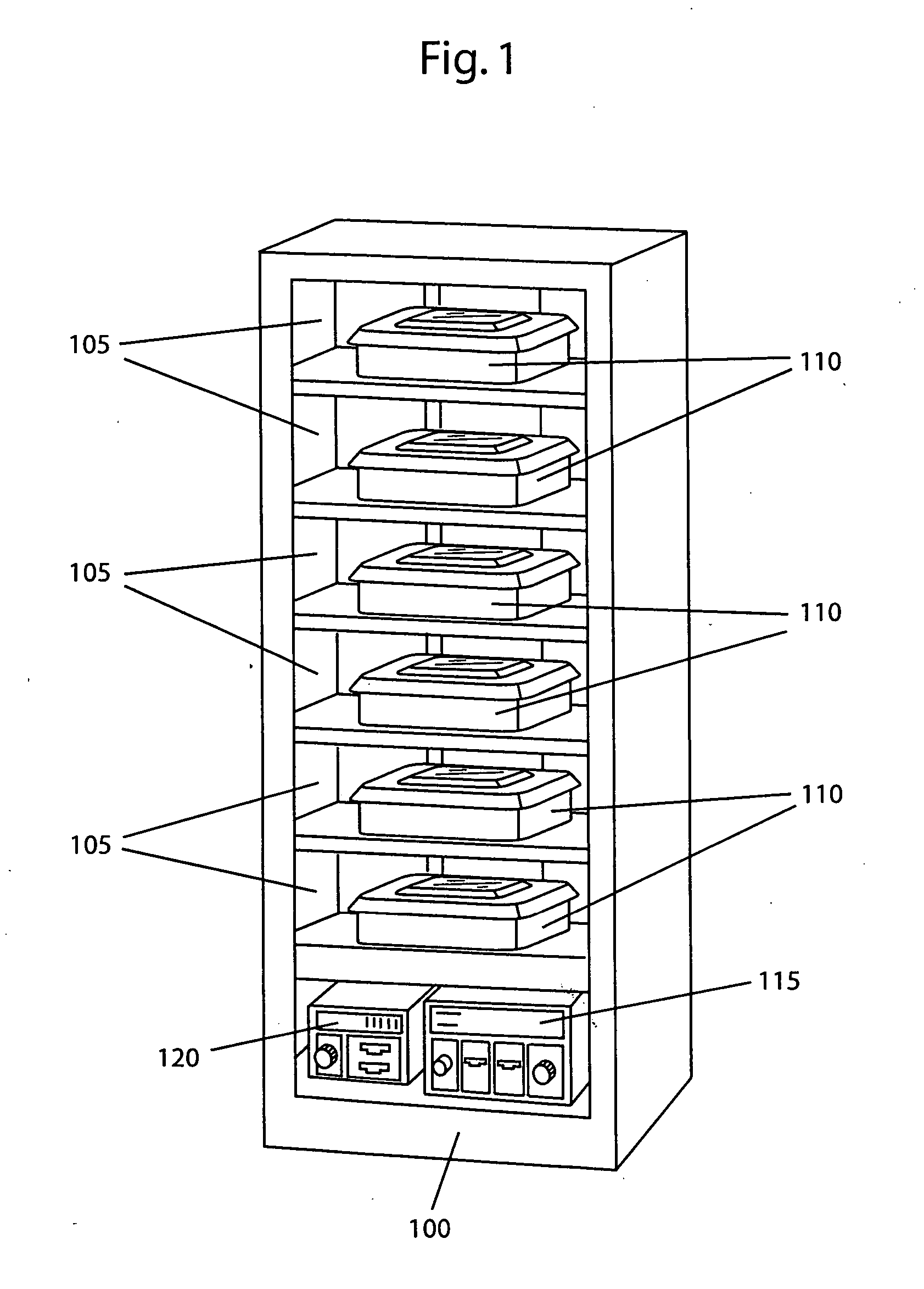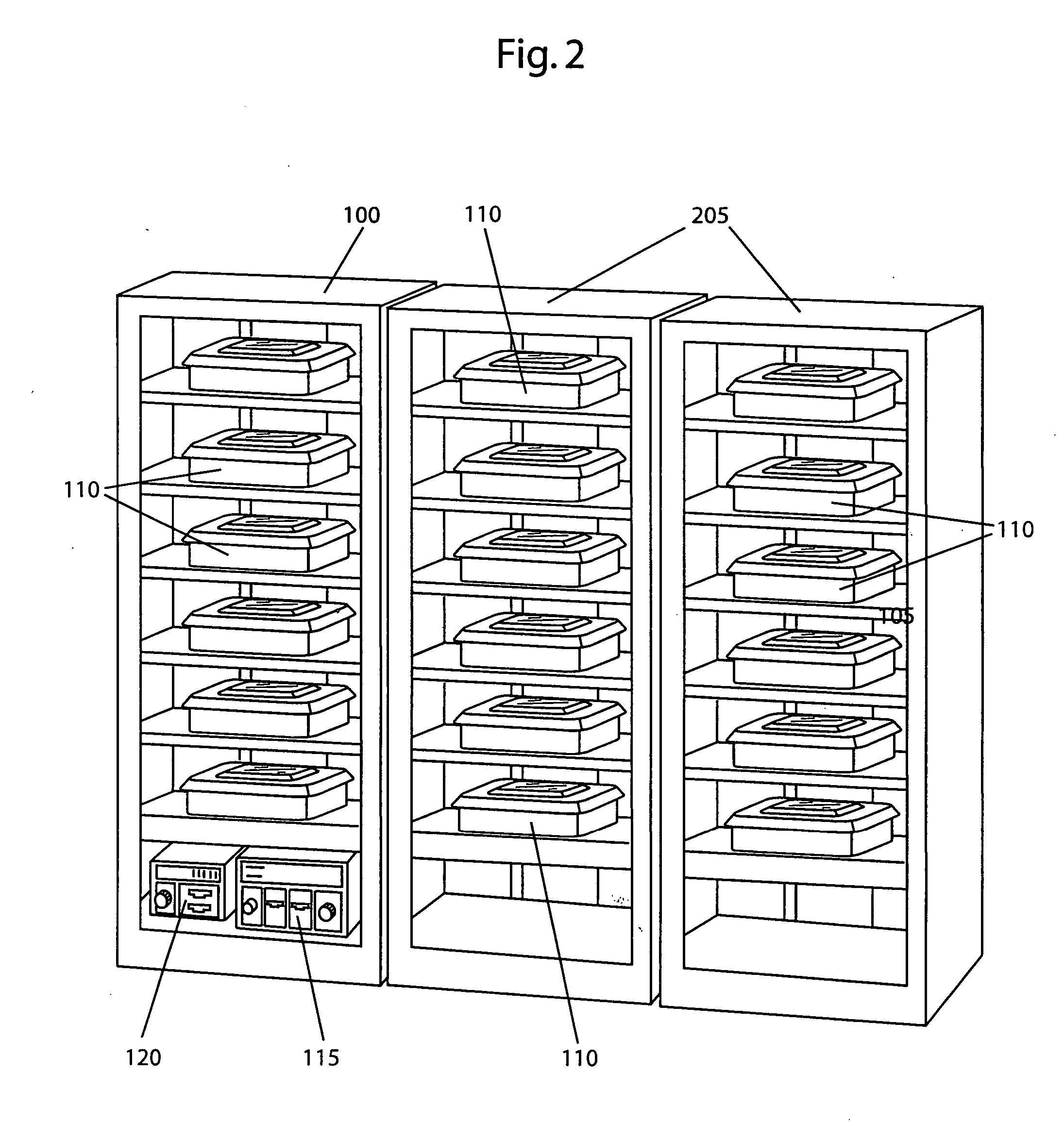Modular sterilization system
a sterilization system and modular technology, applied in the direction of disinfection, chemical/physical/physical-chemical processes, energy-based chemical/physical/physical-chemical processes, etc., can solve the problems of large volume of liquid, plurality of trays or containers, placement or stacking, etc., to reduce waste of power and additives, improve overall sterilization efficiency, and reduce health and environmental hazards
- Summary
- Abstract
- Description
- Claims
- Application Information
AI Technical Summary
Benefits of technology
Problems solved by technology
Method used
Image
Examples
Embodiment Construction
[0020] By way of example, the present invention shows and describes a modular sterilization system for use in a medical sterilization application. It is, however, contemplated and within the intended scope of the present invention to employ the modular sterilization system in other applications employing sterilization techniques such as, but not limited to, the handling of food. An exemplary six unit modular sterilization section 100 in accordance with the present invention is shown in FIG. 1. The sterilization section may be designed, as desired, to accommodate any number of one or more units. In the present invention, the term “units” is generically used to describe any closable container such a tray with a lid, a closable box or a closable bag. Each unit may be adapted in size and shape based on the size and shape of the particular objects being treated. The modular sterilization section is designed with one or more compartments 105 adapted in size and shape to preferably receive...
PUM
| Property | Measurement | Unit |
|---|---|---|
| size | aaaaa | aaaaa |
| power | aaaaa | aaaaa |
| energy | aaaaa | aaaaa |
Abstract
Description
Claims
Application Information
 Login to View More
Login to View More - R&D
- Intellectual Property
- Life Sciences
- Materials
- Tech Scout
- Unparalleled Data Quality
- Higher Quality Content
- 60% Fewer Hallucinations
Browse by: Latest US Patents, China's latest patents, Technical Efficacy Thesaurus, Application Domain, Technology Topic, Popular Technical Reports.
© 2025 PatSnap. All rights reserved.Legal|Privacy policy|Modern Slavery Act Transparency Statement|Sitemap|About US| Contact US: help@patsnap.com



